Communication Design Explained: Ultimate Guide and Examples for Beginners
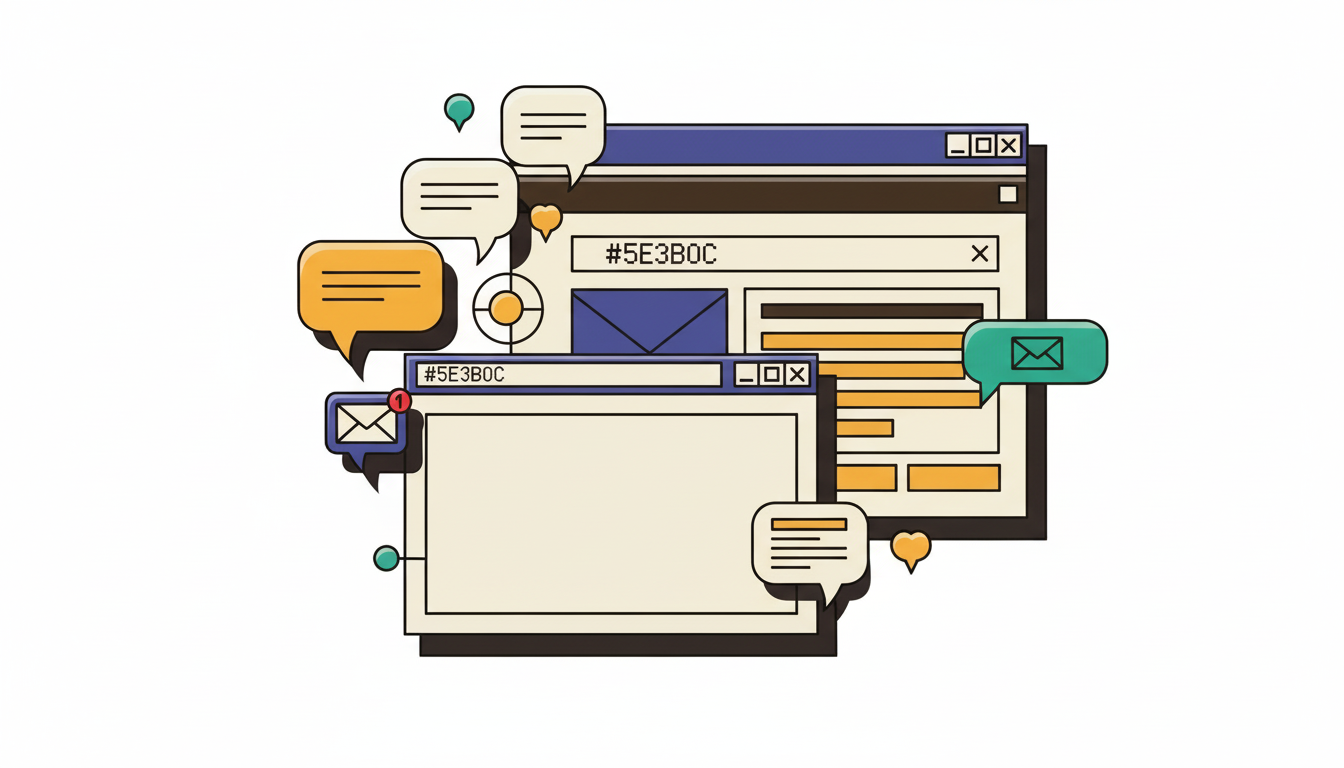

Denine Walters
Created on Sep 21, 2025
Ever noticed how Spotify Wrapped takes over every December? Not just in the app, but on social feeds, billboards, and even in conversations with friends?
That’s communication design. It doesn’t stop at a chart or color scheme; it connects data, storytelling, and design across channels, showing how creativity, strategy, and technology work together to shape meaning and impact.
From brand storytelling to human-centered design, communication designers use research, tools, and collaboration to solve problems and create experiences.
In this article, I’ll explain what communication design is, walk through its principles and process, and show how you can build a career in this evolving field.
What is communication design?
Communication design combines creative thinking, strategic planning, and technology to communicate ideas people can understand and act on. It’s about creating something attractive and shaping meaning.
Think of it as visual communication with a strategic spine.
The field evolved from early graphic design and advertising, when brands realized visuals alone weren’t enough. Campaigns needed strategy, storytelling, and audience insight.
Over time, it expanded to include typography, color theory, human-centered design, digital tools, and cross-media campaigns, often drawing on design thinking to connect message and medium.
Unlike graphic design, which focuses on individual deliverables like posters or logos, communication design considers the entire experience: what to say, how to say it, and through which channels.
It’s about solving creative problems with purpose, not just polish.
Apple shows how effective communication design creates a unified experience.
From billboard ads to product visuals to minimalist packaging, every element shares the same simplicity and tone that are instantly recognizable worldwide.

Differences between communication design vs graphic and visual design
Graphic design, visual design, and communication design overlap, but each plays a distinct role in shaping how ideas are expressed. Here’s how they differ in scope and purpose:
Graphic design
Graphic design focuses on creating individual assets, such as logos, posters, packaging, or brochures, that make information visually appealing.
Graphic design asks, “How should this look?”
A graphic designer would create the iconic Boston Marathon logo and medal, a single visual asset that carries meaning and recognition worldwide.

Visual design
Visual design extends into the digital space, refining how websites and apps look and feel by shaping typography, spacing, and color to enhance usability and polish.
Visual design asks, “How should this feel on screen?”
A visual designer would create Notion’s homepage and ensure the typography, spacing, and color improve clarity, flow, and usability.
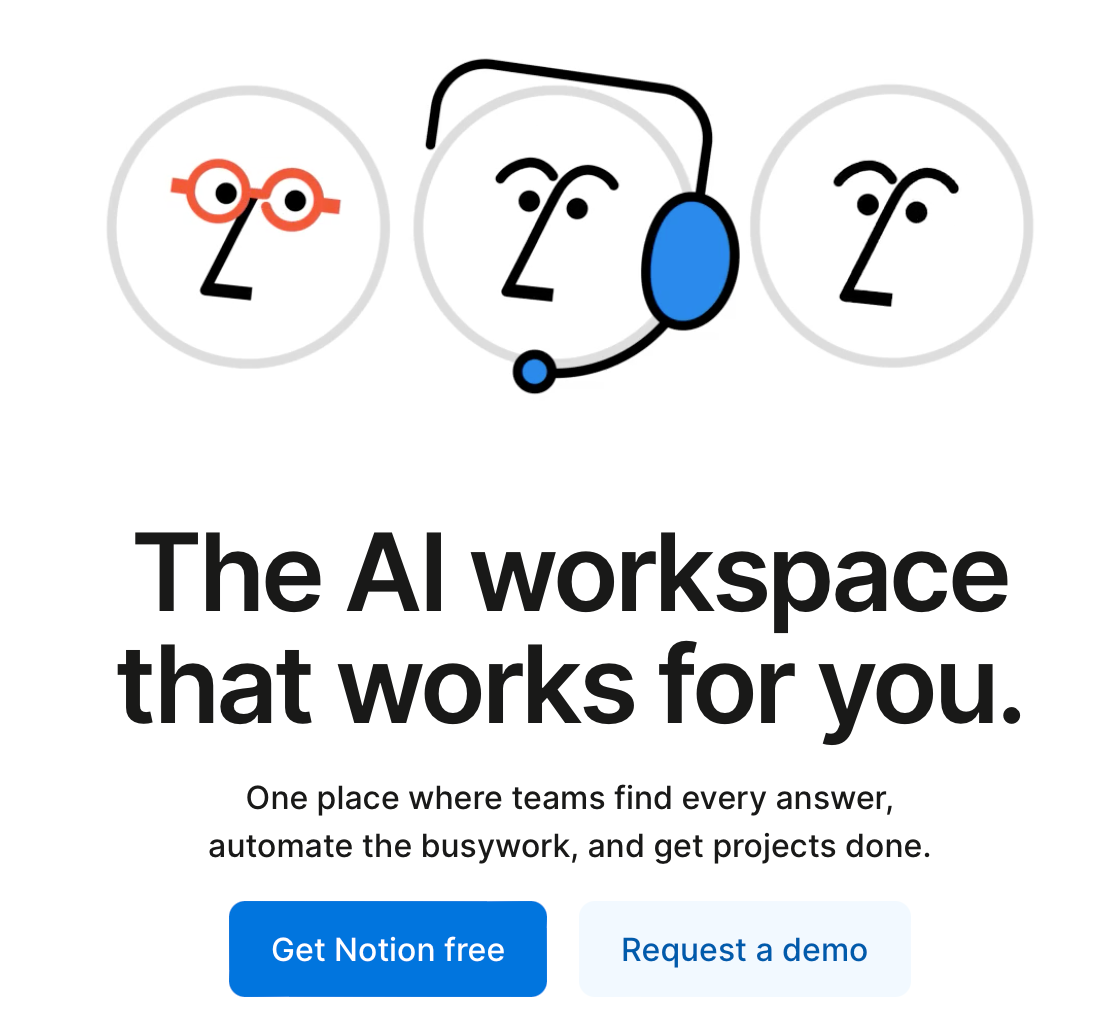
Communication design
Communication design is broader still: it blends creativity, strategy, and technology to craft purposeful messages and ensure they reach audiences effectively across multiple channels.
Communication design asks, “What message should this send, to whom, and why?”
A communication designer would go further, creating the whole campaign: the homepage, app screens, social ads, and even the tone of voice, as Calm does across its ecosystem.

7 principles of communication design
Great communication design doesn’t happen by accident.
It’s grounded in key principles that help designers balance creativity with clarity, strategy, and impact across different media.
1. Clarity and simplicity
Audiences don’t have time to decode cluttered layouts, dense text, or competing visuals. So the best communication design strips away noise so the message comes through instantly.
Clarity means using plain language, straightforward typography, and layouts that guide the eye without distraction.
Simple doesn’t have to be boring. Instead, make intentional choices that let the message shine.
Google’s homepage, with its logo and single search bar centered on a white background, shows how clarity and simplicity create usability and brand recognition.
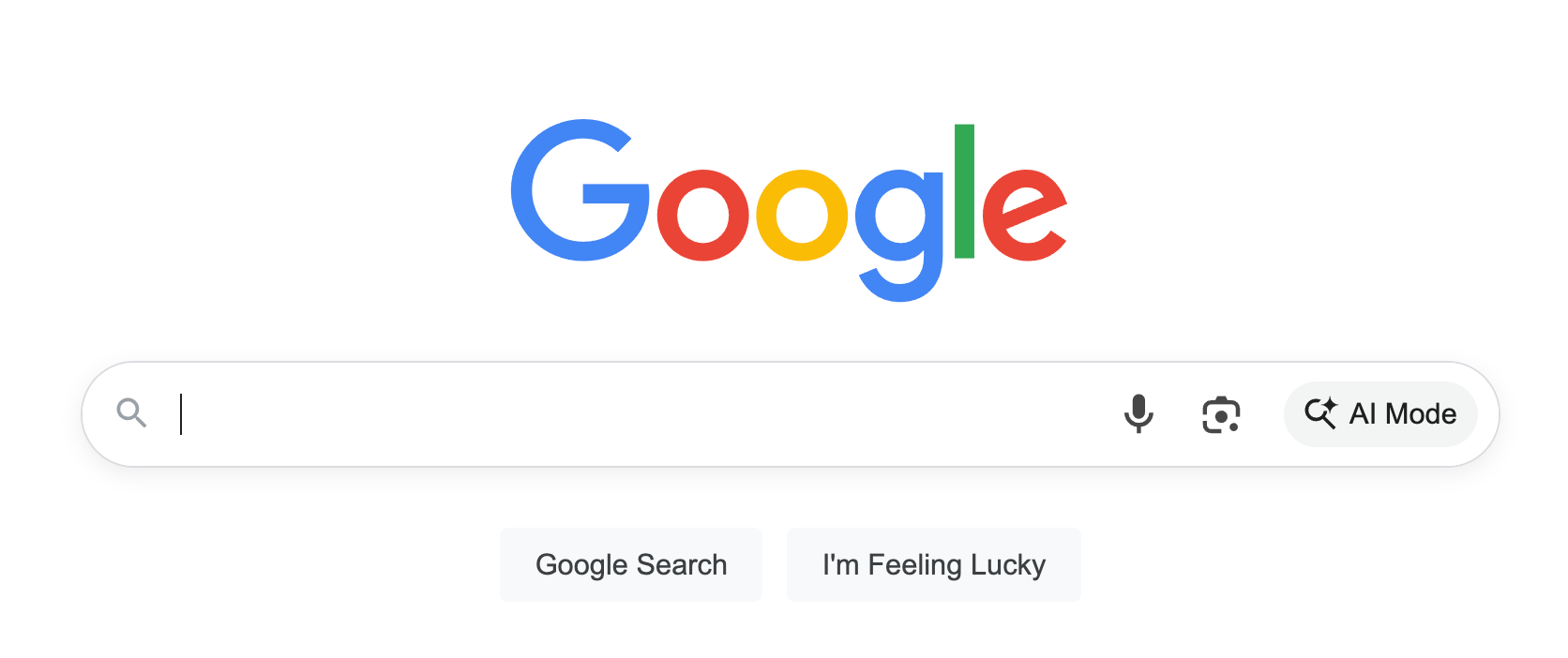
2. Audience-centricity
Every strong piece of communication design starts with the audience. Designers need to know who they’re speaking to and understand their target market’s needs, expectations, and cultural context.
What resonates with one group might confuse or even alienate another. That’s why research and empathy are as important as typography or color theory, especially when navigating cultural issues across markets.
Rather than using a one-size-fits-all homepage, IKEA tailors its content to reflect each region’s culture and needs.
The U.S. IKEA website emphasizes loyalty programs, special deals, and shopping convenience.
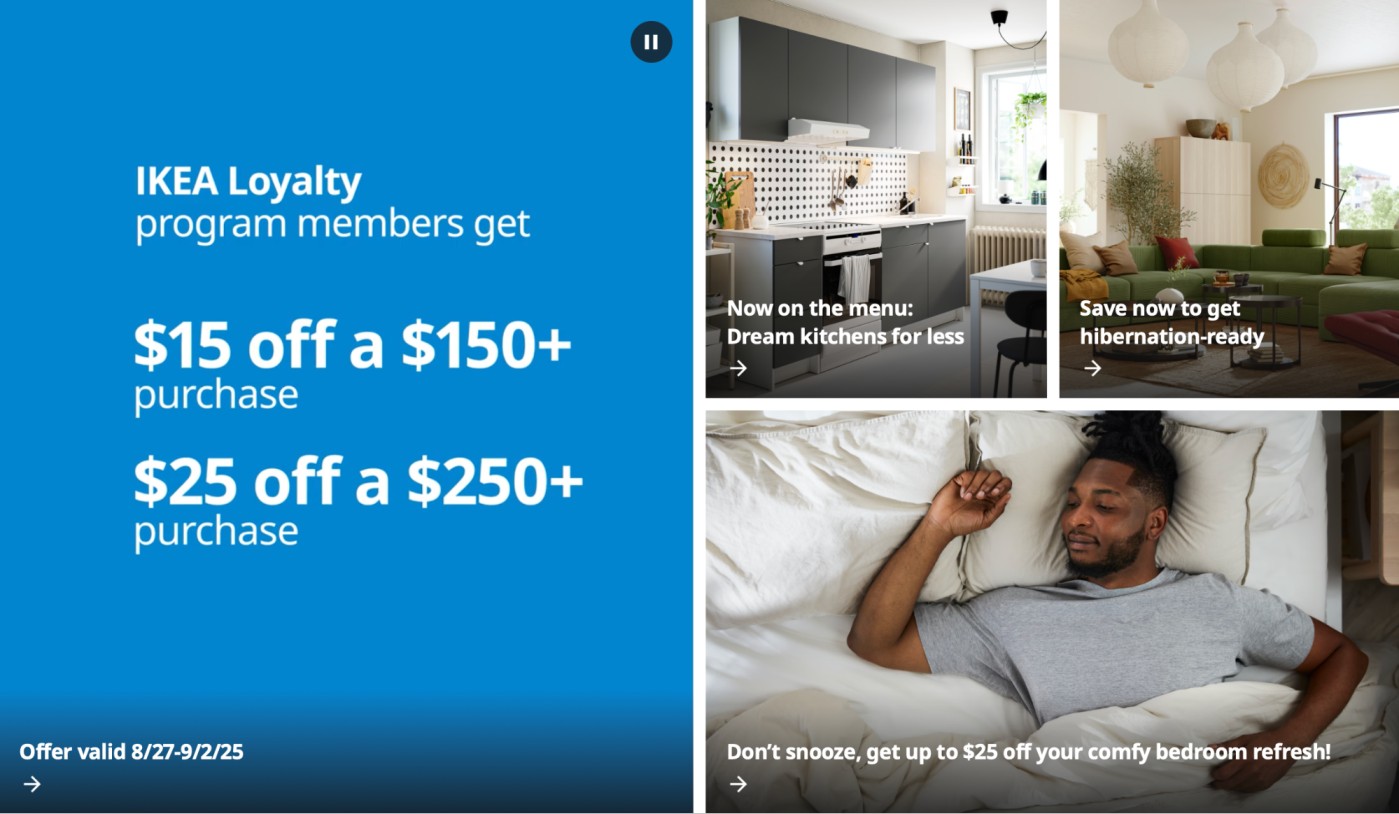
In Norway, sustainability tips and IKEA Family events take center stage.
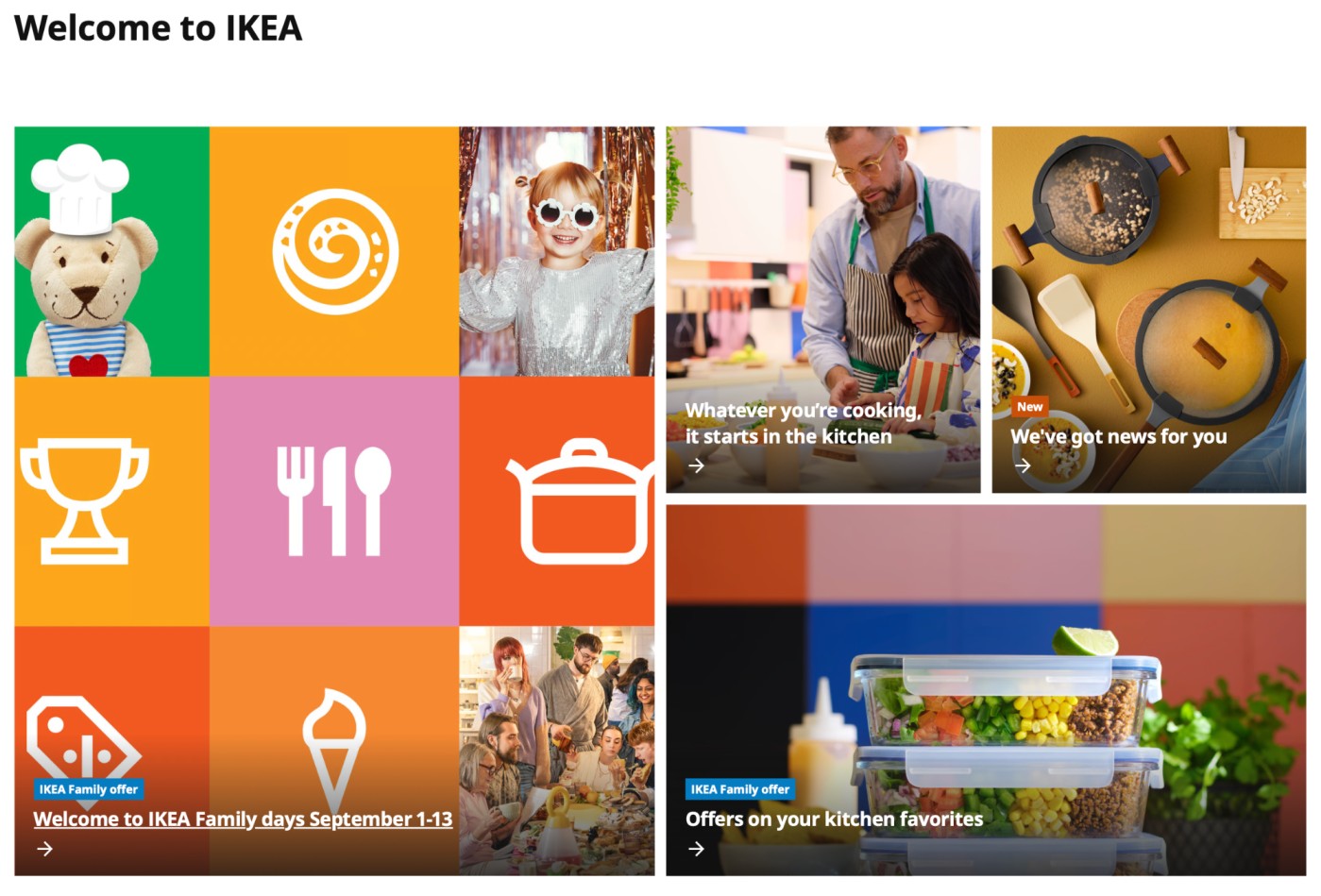
In Japan, the homepage highlights bargains, compact living ideas, and locally relevant lifestyle inspiration.
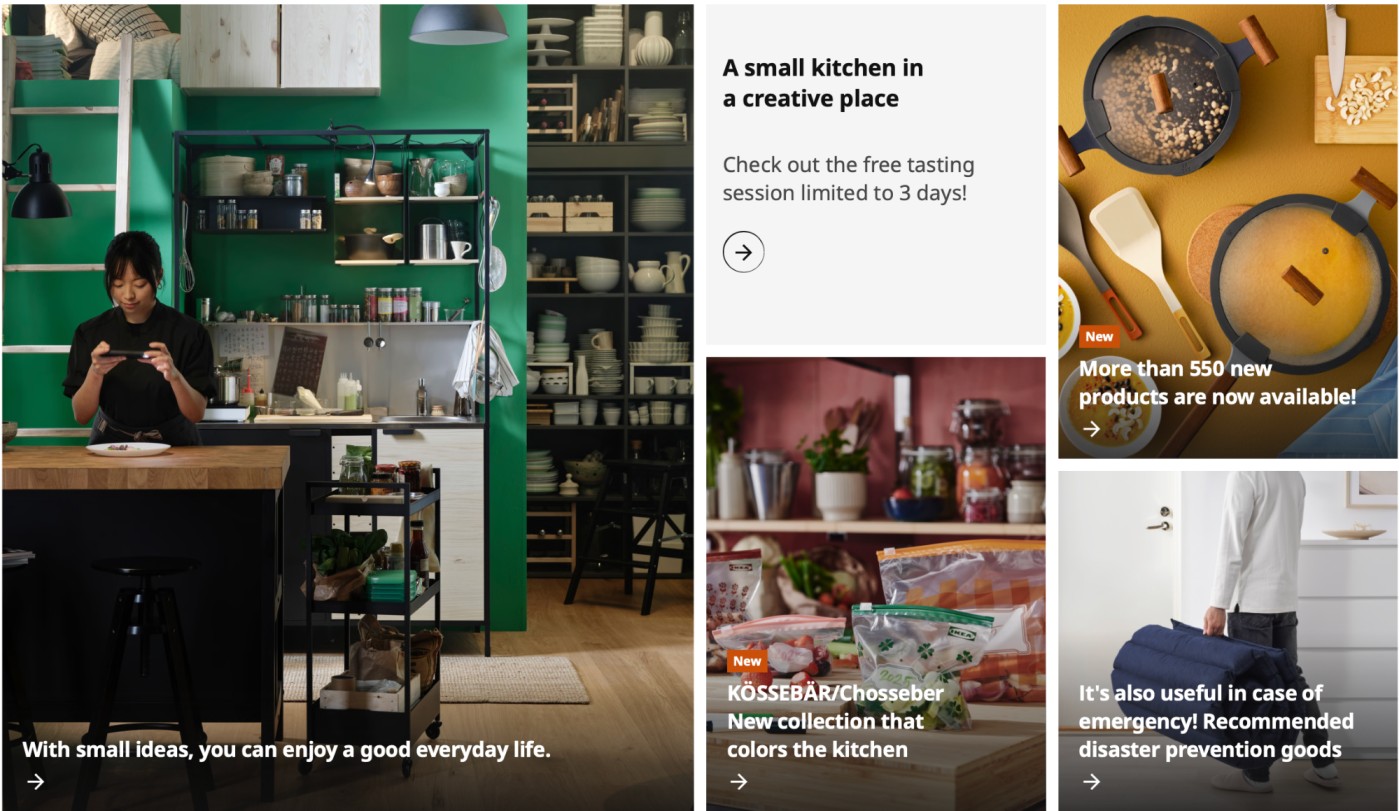
3. Visual hierarchy
Communication design isn’t just about the elements you use but also about how you arrange them.
Visual hierarchy guides the viewer’s eye, showing them what to notice first, second, and last. Designers use typography, color, size, spacing, and layout to establish this order.
A strong hierarchy makes complex information more digestible and helps people avoid feeling overwhelmed.
News websites are a perfect example: the BBC homepage highlights lead stories with bold headlines, larger images, and prime placement, while smaller stories are pushed lower with lighter typography.
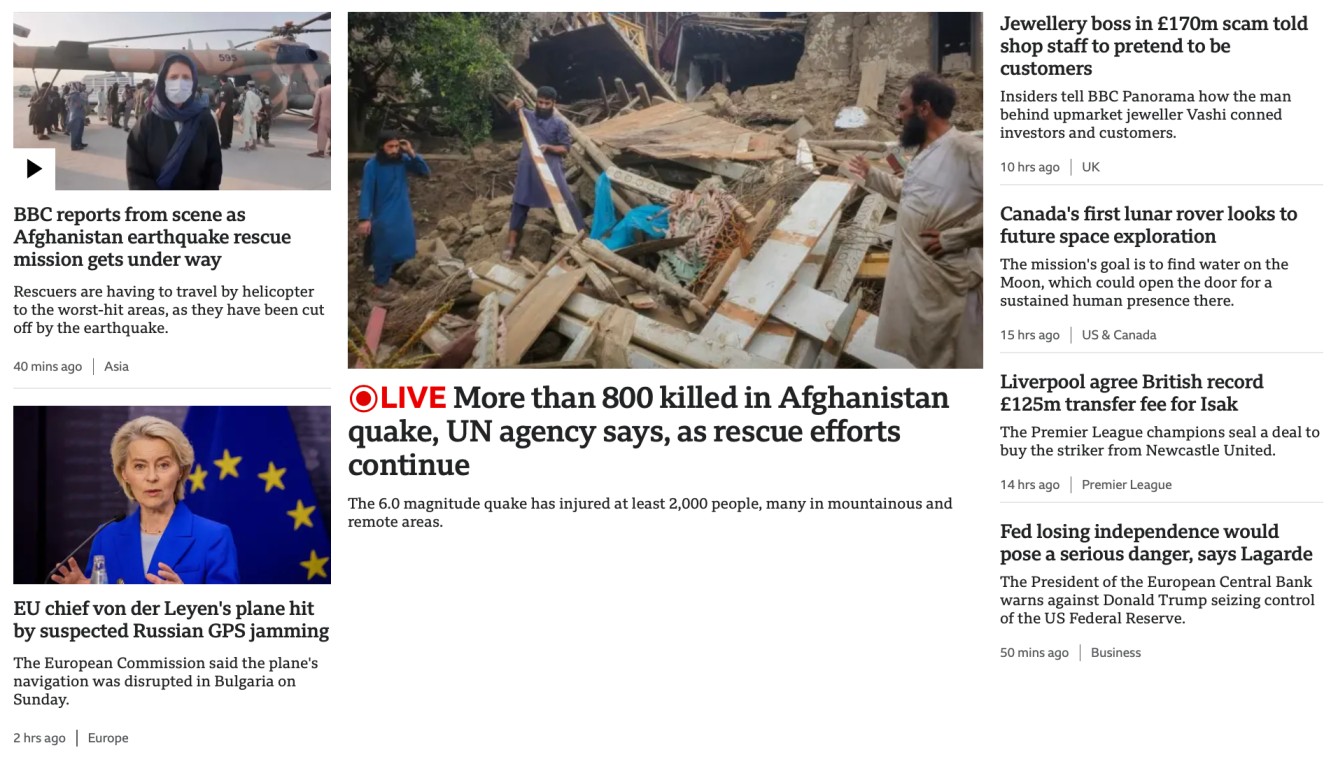
This structure helps readers scan quickly, moving from the most important updates to secondary details.
When hierarchy is clear, the design feels intuitive; when it’s missing, audiences can’t tell what matters and lose interest fast.
4. Consistency
Consistency builds recognition and trust. When branding elements, such as fonts, colors, logos, and tone of voice, stay uniform across every channel, audiences immediately know who they’re engaging with.
For communication designers, this means developing brand guidelines that apply consistently across print, digital, advertising, and product experiences.
Consistency doesn’t limit creativity; it makes variations stronger because they all feel part of the same identity.
Coca-Cola’s global campaigns always feature the same red and white colors, scripted typography, and upbeat tone, whether it’s a TV commercial, a social media post, or a billboard.

5. Storytelling
Effective communication design evokes emotions in people. Storytelling is how designers create emotional connections, weaving narratives that audiences can see themselves in.
A strong story can inspire, persuade, or make a brand memorable long after the ad is gone.
Stories can be told through a single image, a short video, or a social post. What matters is the arc: challenge, struggle, resolution.
Nike’s ‘It Only Takes Everything’ ad with Rafael Nadal shows how storytelling turns design into emotion. The ad frames his career as a narrative of sacrifice and triumph that inspires audiences worldwide.
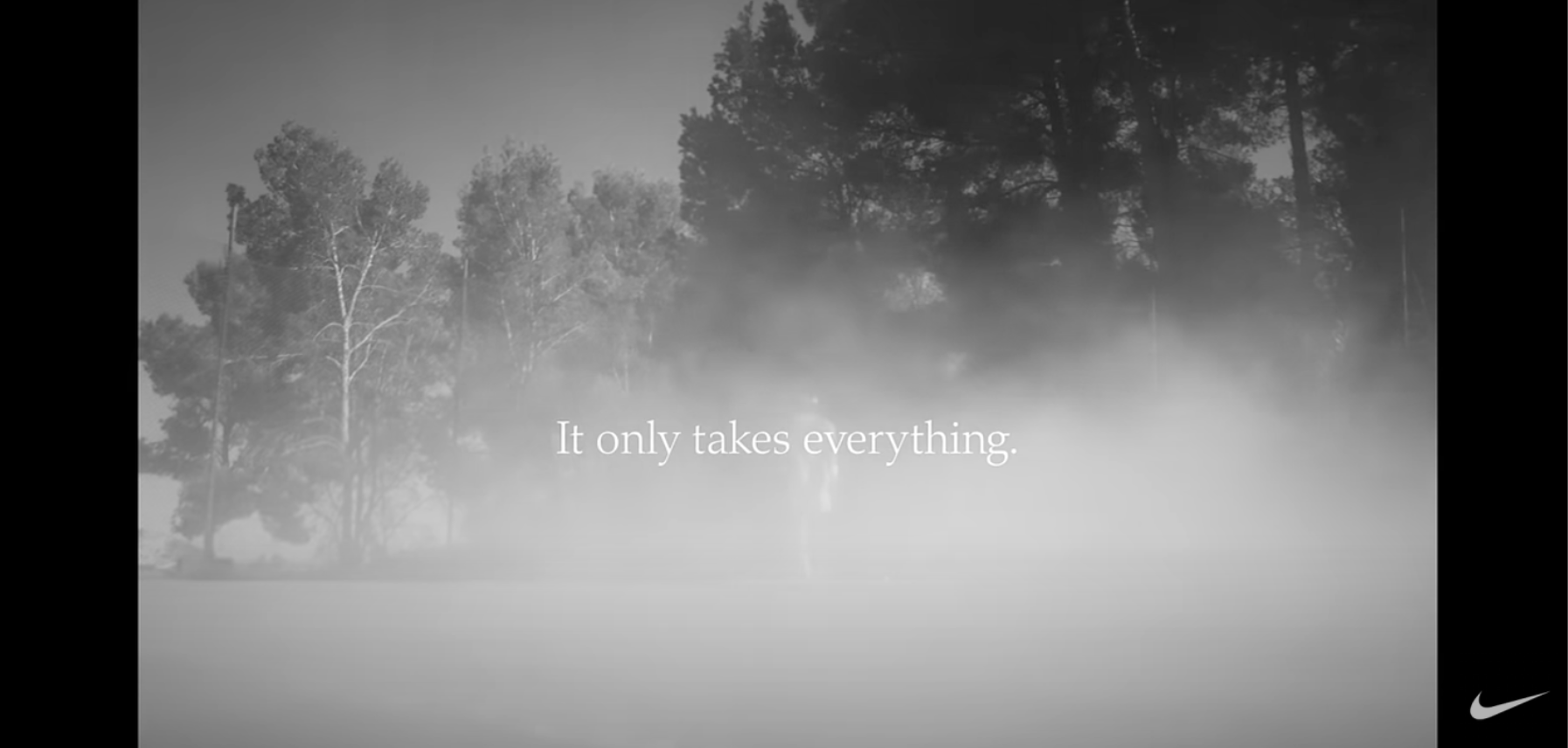
The story becomes the bridge between product and purpose.
6. Functionality and usability
Good communication design has to work as well as it looks. A layout might be beautiful, but the design fails if the text is unreadable, the colors clash for people with vision impairments, or the navigation is confusing.
Functionality and usability ensure that audiences can see the message and act on it. This means choosing legible fonts, providing enough color contrast, and structuring content so it’s easy to scan.
The London Underground map is a classic example of functionality in design.
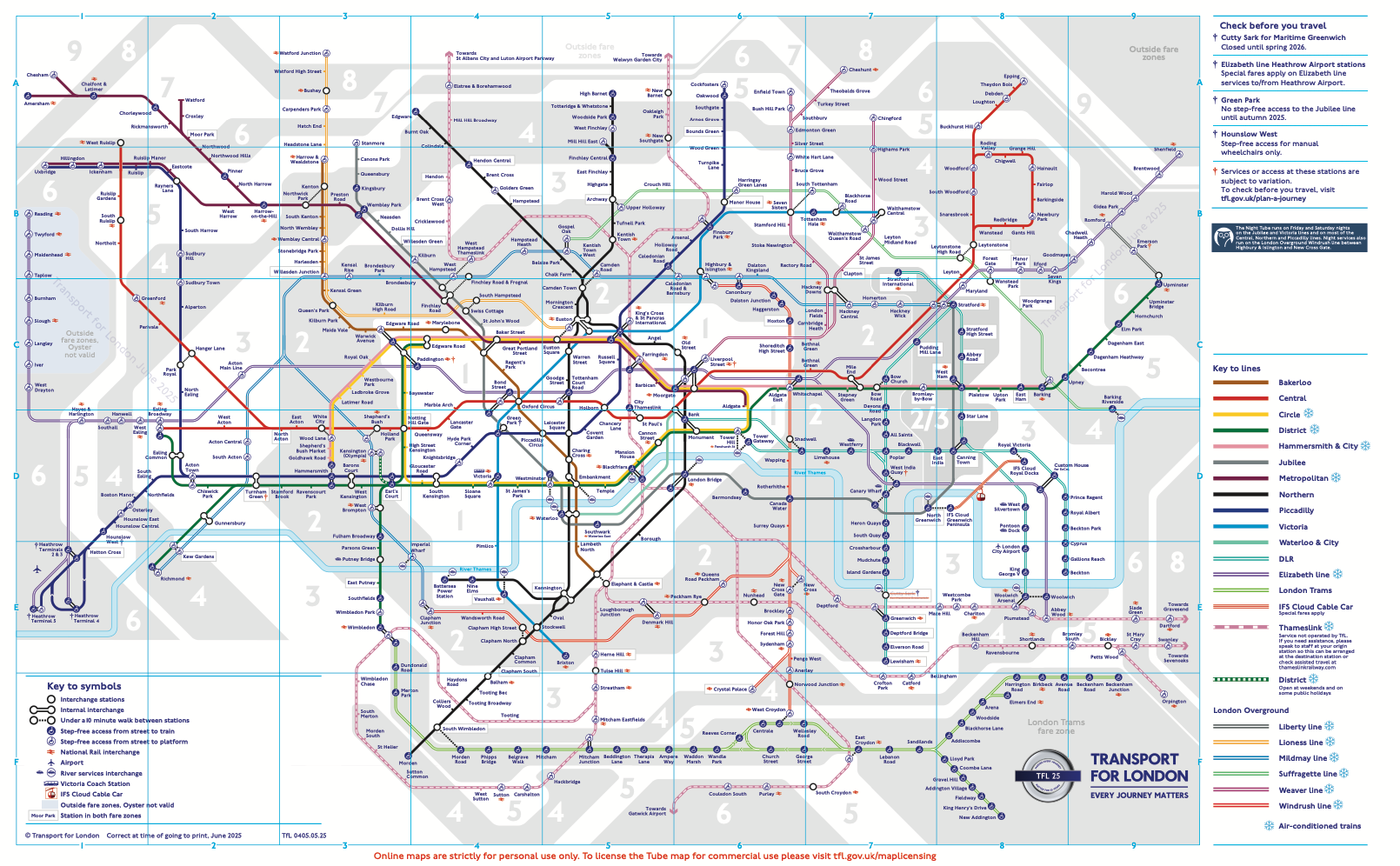
Its simplified layout doesn’t perfectly mirror geography. But it organizes complex routes in a way passengers can instantly understand, a principle just as relevant to website menus or mobile apps.
7. Innovation and adaptability
New platforms, formats, and technologies continually change how audiences consume content, and designers must adapt to these changes.
Innovation means experimenting with emerging tools, while adaptability means learning how to use them effectively without losing sight of the message.
For many brands, this now includes designing for TikTok, interactive experiences, or motion graphics. Some are even experimenting with immersive tools, such as augmented reality (AR), to connect with users in entirely new ways.
Gucci’s Virtual 25 sneakers show how innovation drives communication design. The shoes are designed for use in AR apps and gaming platforms, reimagining how audiences interact with fashion in digital spaces.
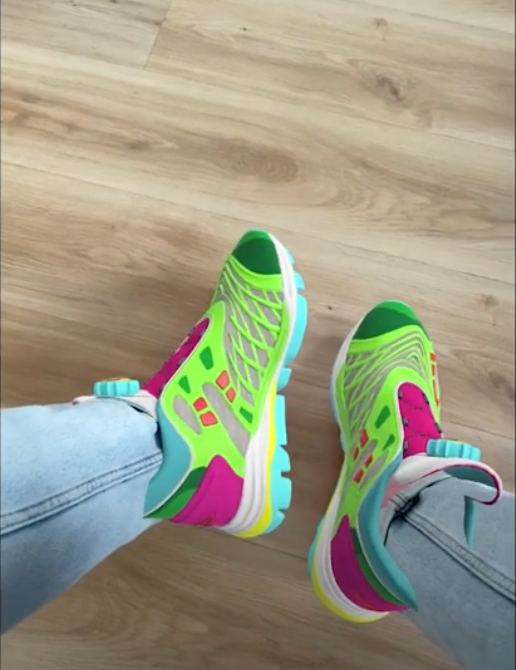
It’s proof that adaptability turns technology into meaningful engagement.
7 communication design process steps
Behind every polished campaign is a structured design process.
These steps guide communication designers from research to launch, ensuring ideas are purposeful, audience-focused, and ready to deliver measurable impact.
Step 1. Research and discovery
Before opening a design tool, communication designers analyze the audience, competitors, and project goals.
Skipping it often leads to designs that look good but miss the mark because they don’t connect with real needs.
Research involves gathering qualitative and quantitative insights, such as user interviews, competitor audits, market reports, and social listening. So collect data, interpret patterns, and translate them into actionable insights.
Ask: Who are we designing for? What motivates them? How do they interact with different media?
Spotify Wrapped is a great example of research in action. Behind the playful graphics and personalized playlists is a massive analysis of user behavior, turning listening data into insights that fuel a global cultural moment.
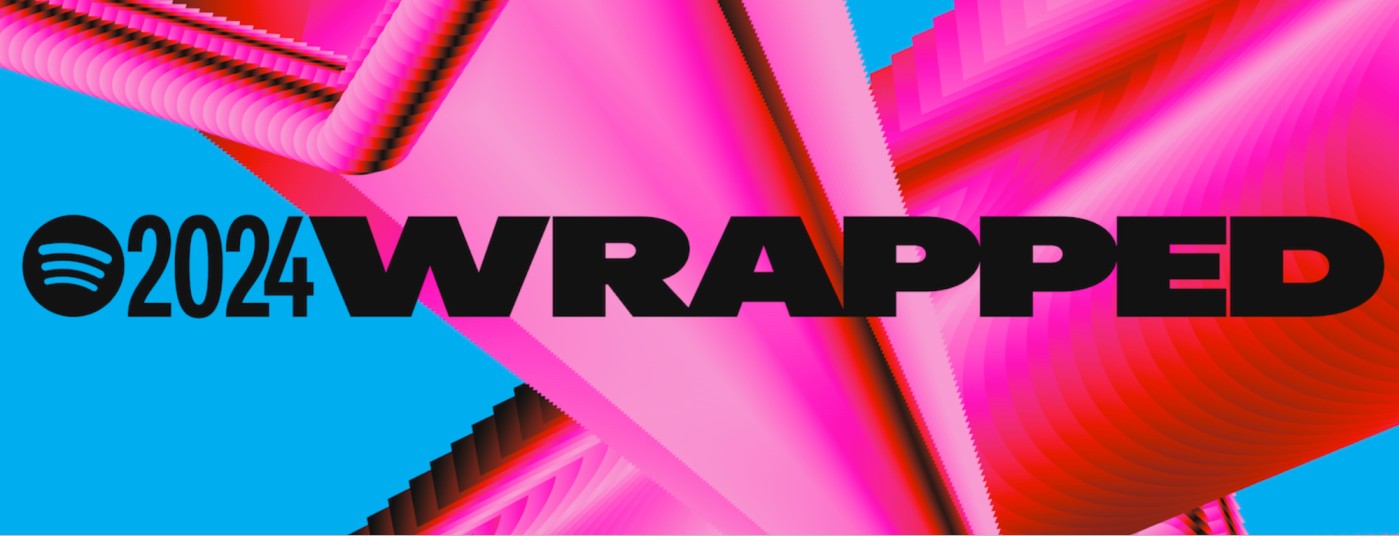
It demonstrates how in-depth audience research lays the foundation for campaigns that resonate globally.
Step 2. Define goals and strategy
Every communication design project needs a clear purpose, whether it’s raising awareness, persuading audiences to act, educating them about an issue, or building brand loyalty.
Without these objectives, even the most beautiful design risks becoming decoration rather than communication.
Strategy translates those goals into a roadmap: what message to share, which channels to use, and how to measure success. This step connects creative problem-solving to real outcomes, keeping the project focused from start to finish.
Always’ #LikeAGirl campaign proves how strategy drives impact. By reframing a stereotype as a strength, the brand empowered young women, boosted relevance, and shifted perceptions worldwide.
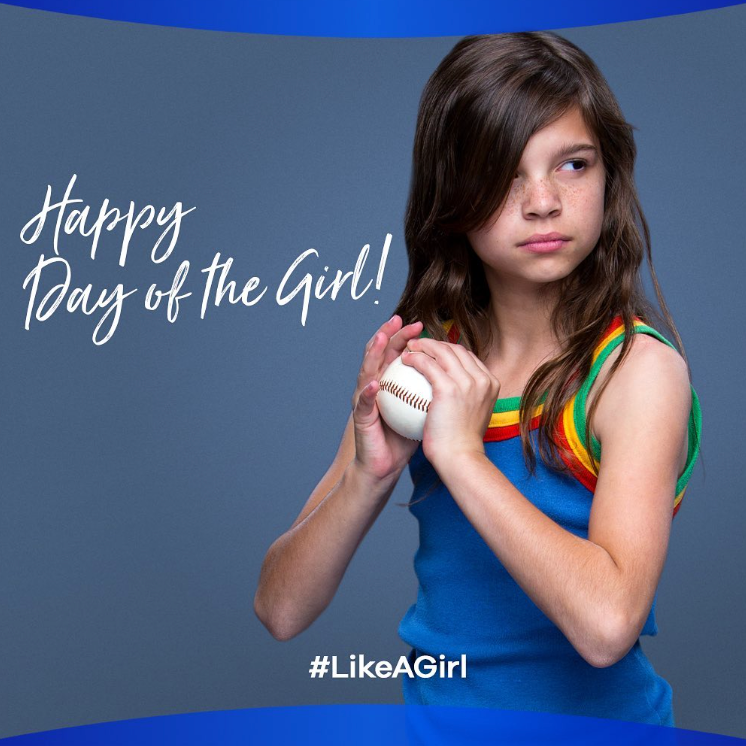
Step 3. Ideation and concept development
Ideation is where creativity flows freely. Brainstorming sessions, mood boards, and rough sketches help teams explore multiple directions before narrowing in on the strongest concepts.
This stage is less about perfection and more about possibility. The more ideas generated, the greater the chance of uncovering fresh, unexpected solutions.
Concept development then takes these raw ideas and shapes them into more defined directions. Teams test how different visual approaches, tones, or narratives align with the project’s goals and audience insights.
Collaboration is key here, since feedback from copywriters, strategists, and developers ensures that concepts are creative and practical.
Pixar’s process involves storyboarding numerous ideas, testing them with internal teams, and moving forward only with the concepts that truly bring the story to life.
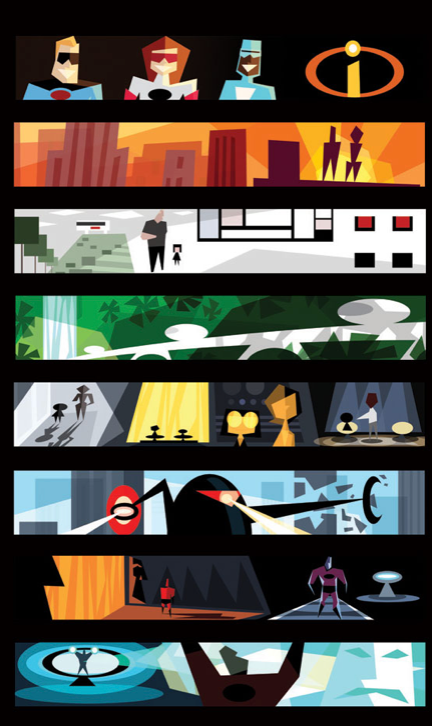
Step 4. Design and prototyping
Once concepts are defined, designers move into creating drafts and testing layouts.
Prototyping turns ideas into interactions, progressing from low-fidelity wireframes to mid-fidelity layouts and ultimately to high-fidelity mockups.
The image below shows a restaurant website evolving from low-fidelity sketches into mid-fidelity layouts and finally polished, high-fidelity mockups.
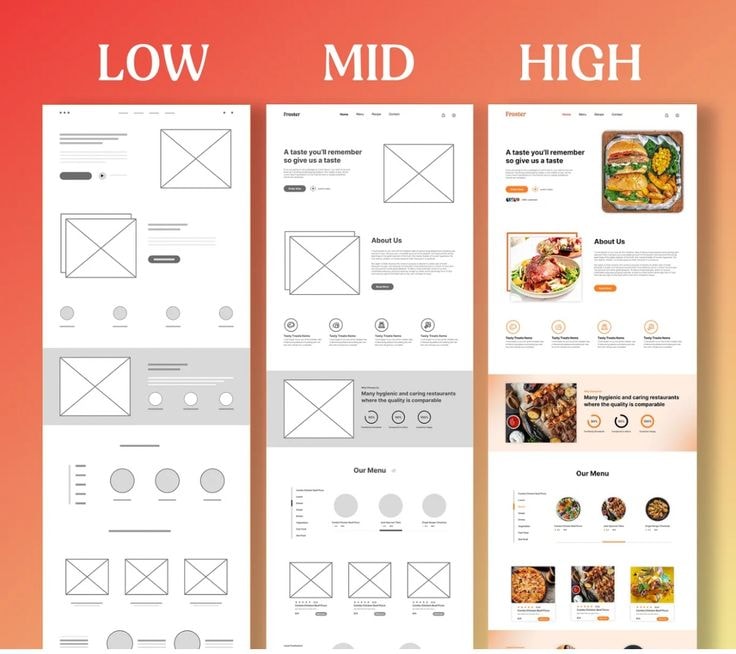
Each stage allows for feedback and refinement before full implementation, saving time and resources while ensuring the design meets user needs.
Step 5. Testing and feedback
Testing ensures that the message resonates and the design functions as intended.
Communication designers gather feedback from real users, focus groups, or team stakeholders to identify blind spots that may not be apparent in the studio.
The goal is to learn what works, what confuses, and what needs refinement.
There are many ways to test.
In digital campaigns, A/B testing compares two versions of an ad, landing page, or email to see which performs better.
For apps and websites, usability tests or analytics tools highlight where users drop off or struggle.
Even quick prototype reviews with a small group can save weeks of costly revisions later.
Press Healthfoods tested two Facebook ads with identical copy but different visuals.
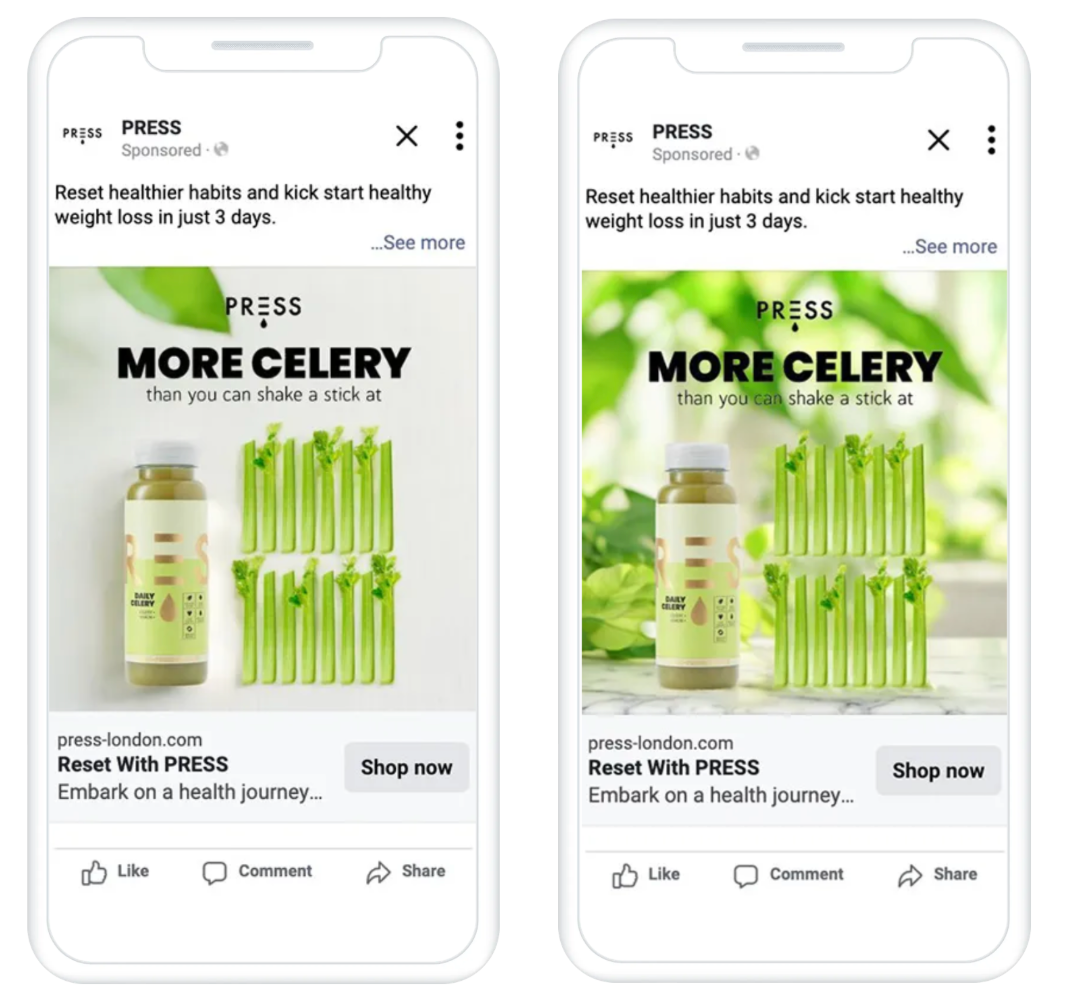
The stronger-performing design proved how even subtle imagery choices can change engagement, underscoring the value of testing before launch.
Step 6. Implementation and launch
This stage is where communication designers translate prototypes into final deliverables, whether that’s a responsive website, a polished mobile app interface, or a cross-channel campaign ready for rollout.
The challenge is keeping consistency while adapting assets for different formats and platforms.
In digital contexts, this means collaborating closely with developers to ensure layouts, typography, and interactions work as intended across devices.
For campaigns, it’s about preparing everything from social media ads to landing pages so the messaging feels seamless, no matter where audiences encounter it.
Duolingo turned its quirky owl mascot into a global campaign asset. Once the “pushy Duo” personality was defined, it was rolled out everywhere: inside the app, on TikTok, in push notifications, and even on bus stop ads.
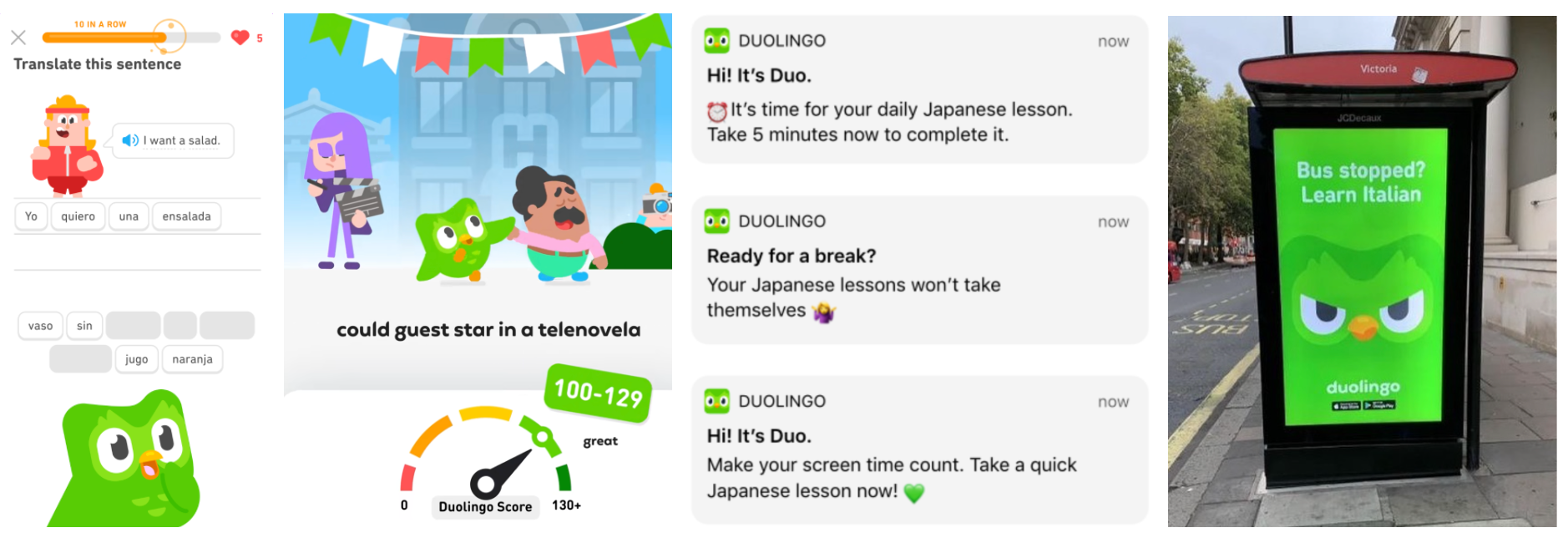
The consistent, multi-channel launch turned a design concept into a cultural phenomenon.
Step 7. Evaluation and iteration
Communication design is only successful if it achieves measurable results, so designers track KPIs such as engagement, conversions, or sales.
Analytics dashboards, user surveys, and heatmaps reveal how people actually interact with a design, often surfacing insights that weren’t visible in early testing.
What makes this step powerful is iteration. Instead of treating a project as “done,” designers refine and improve it over time.
This agile mindset is especially crucial in digital contexts, where even minor adjustments to typography, layout, or messaging can have a profound impact.
Netflix frequently tests alternate poster designs for its shows to see which version earns more clicks.

5 skills to become a communication designer
Strong communication design requires more than artistic talent. It blends creative, strategic, and technical skills, often relying on interdisciplinary collaboration to shape messages, keep teams aligned, and adapt to a rapidly changing industry.
Here are the skills you’ll need to thrive as a communication designer, whether you’re a future designer or a communication design student getting started.
1. Visual and design literacy
At the core of communication design is fluency in visual language. Designers must understand how typography, color, and composition work together to guide attention and create meaning.
These basics determine whether a design feels balanced, communicates effectively, and resonates emotionally with its audience.
For example, Disney+ uses dark cinematic backgrounds with bold typography to create an immediate sense of drama and immersion.
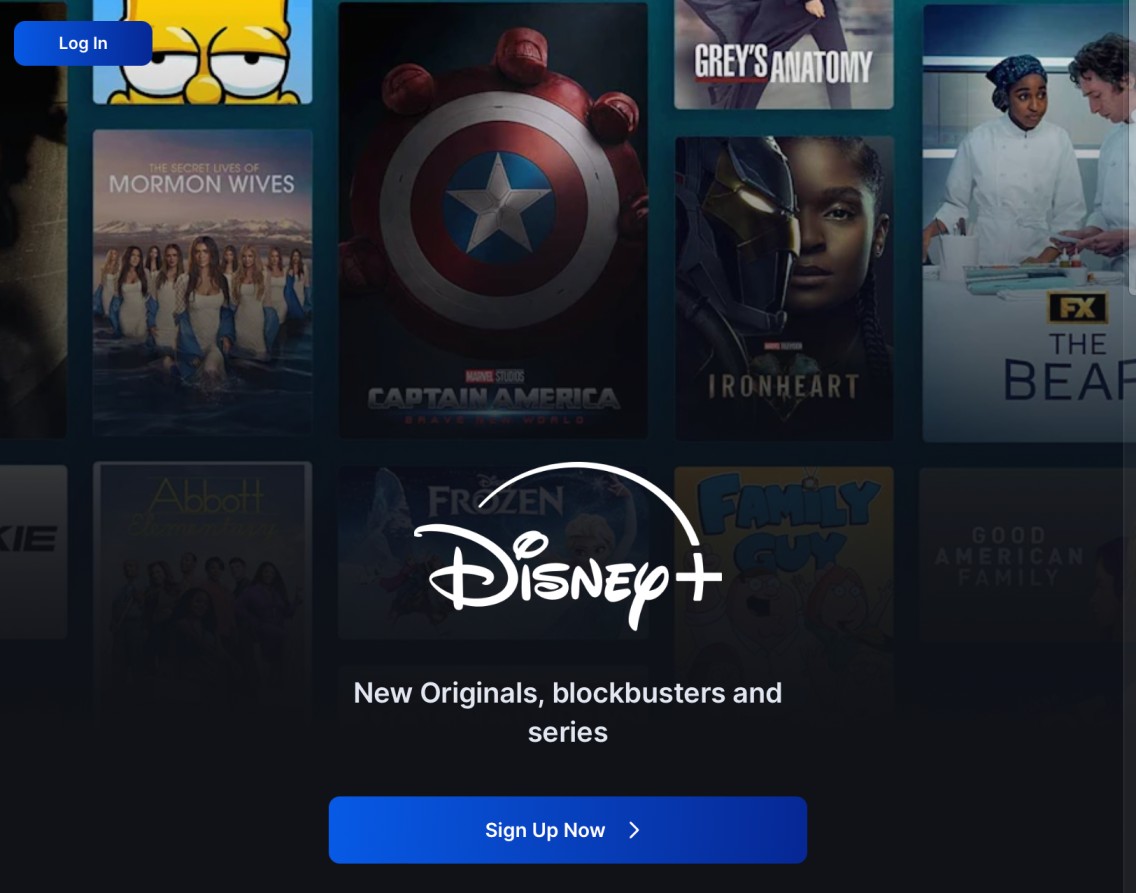
Visual literacy isn’t just for students in a communication design program; it’s a lifelong practice.
If you’re a communication design major in a university degree program, you’ll cover type, color, layout, and critique through foundation courses, often guided by experienced communication design faculty.
Advanced study might also include electives in fine arts or opportunities to study abroad, where exposure to global design traditions sharpens your perspective.
Beginners can start with resources like Canva Design School to explore type pairings, color palettes, and layouts. Advanced designers refine their skills through critique, research, and exposure to a wide array of art and media.
Strong visual literacy gives communication designers the confidence to make intentional choices, rather than relying on guesswork.
2. Strategic thinking
To align design with strategy, designers need to understand brand messaging, consumer psychology, and marketing principles.
Strategic thinking helps answer the critical questions:
-
What are we trying to achieve?
-
Who needs to hear this message?
-
What will make them care?
This bridges creative practice with business outcomes, helping designers craft solutions that drive awareness, persuasion, or behavior change.
It also makes them stronger collaborators, able to speak the language of clients, marketers, and executives.
Dove’s Real Beauty campaign was built on consumer insights showing women’s dissatisfaction with narrow beauty standards.
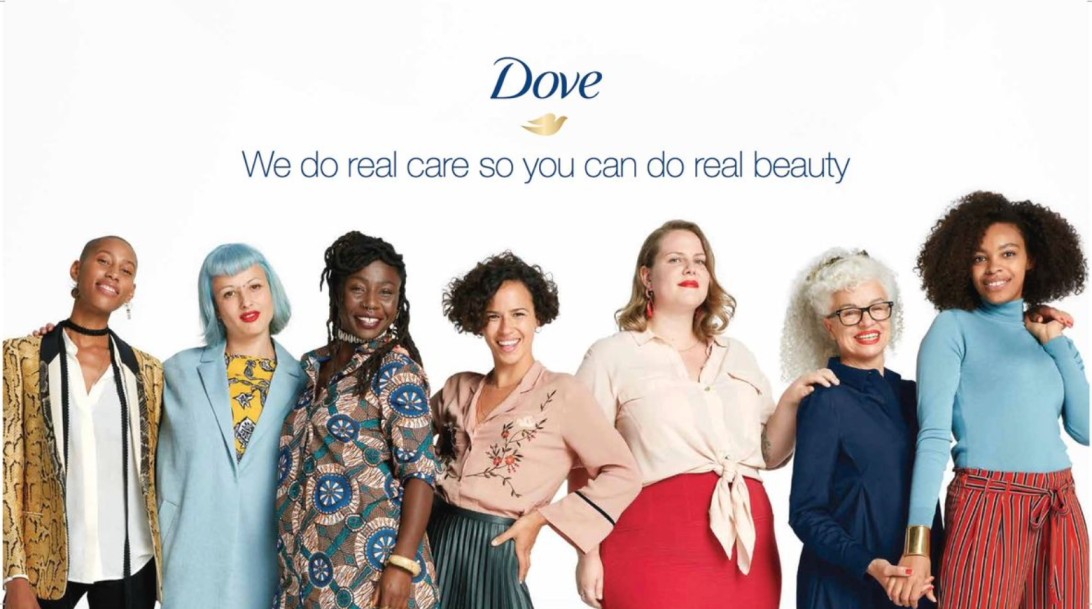
By grounding the campaign in strategy, Dove turned a brand message into a global movement that reshaped conversations about identity and self-worth.
Treat strategy as professional practice: a repeatable habit that ties creative choices to business goals.
3. Communication and collaboration
Communication designers don’t work in isolation. Success depends on collaborating with cross-functional teams, including copywriters, marketers, developers, and product managers, to keep goals aligned and ideas clear.
In web and app contexts, this often means working directly with developers to refine layouts, ensure accessibility, and translate visuals into code.
In agencies, it’s about syncing with writers, strategists, art directors, and creative directors to maintain cohesion. Strong collaboration fosters trust, streamlines workflows, and yields better outcomes.
In ad agencies, creative teams often bring designers, writers, and strategists into the same sprint to refine ideas, an approach now mirrored in product design sprints for apps and digital platforms.
4. Adaptability and continuous learning
New tools, platforms, and cultural shifts constantly reshape how audiences consume content, and communication designers must keep pace with these changes.
Adaptability means experimenting with new media, while continuous learning ensures skills evolve alongside technology.
Today, that could mean trying AI-powered tools, learning motion graphics, or exploring AR/VR experiences.
A few years ago, brands had to master TikTok; tomorrow’s must-use platform may not even exist. Staying curious, testing new tools, and refining workflows keep a designer’s practice resilient.
Adaptability also extends to cultural awareness: how audiences engage with design in different regions, or how accessibility standards shift expectations.
Red Bull shows adaptability in action, evolving from communicating like a beverage company into a global media brand.
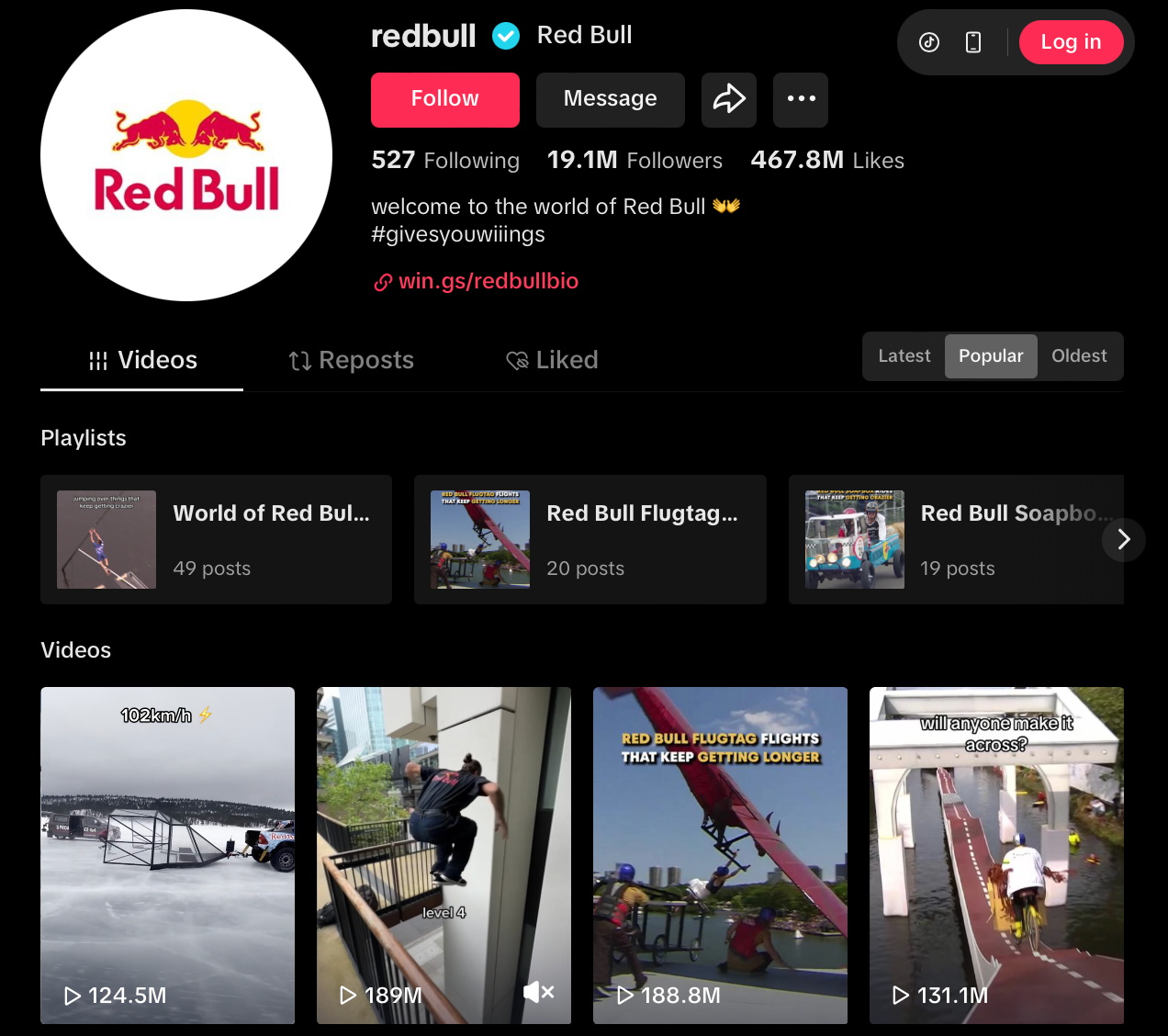
By embracing extreme sports, live events, and digital-first content, it has proven that expanding into new platforms can amplify both reach and relevance.
5. Digital tools and software
Every communication designer relies on a toolkit to bring ideas to life.
Mastery of software isn’t the goal, but knowing how to use the right tools makes the design process smoother and more effective.
UX Pilot is a great tool for wireframing and prototyping web and app experiences that doesn't require you to have years of professional design experience.
Industry standards like Adobe Creative Suite and Figma cover advanced editing and collaborative interface design.
For quick visuals or social content, Canva offers an accessible entry point.
Beginners don’t need to invest in everything at once. Free or low-cost tools can build confidence before moving to professional-grade platforms.
What matters most is using tools intentionally: choosing the one(s) that best support the project’s needs.
Over time, expanding your toolkit allows you to take in a broader range of clients and projects.
Career paths in communication design
Communication design opens doors to a wide array of roles across creative industries. Many communication design programs also expose students to research, business, and portfolio-ready professional practice.
In school, you might choose a major or focus area, such as editorial design, exhibition design, motion graphics, or interaction design. Faculty members and mentors, including everyone from senior designers to an assistant professor, guide students in applying theory to real-world projects.
From hands-on design to strategic leadership, here are the most common career paths in communication design.
1. Graphic designer
Graphic designers focus on creating visuals that bring a brand or message to life, often working at the heart of visual communication. Their work includes designing logos, posters, packaging, and layouts for print or digital channels, including editorial design.
Think of the Nike swoosh, Apple’s iPod silhouette posters, National Geographic’s iconic covers, or Toblerone’s triangular packaging—each is the work of a graphic designer shaping a single visual asset that defines a brand.

While often seen as the most traditional path, graphic design remains central to the design industry because strong visuals are the building blocks of communication.
2. UI/UX designer
UI/UX designers apply communication design to digital experiences. Their role is to create apps, websites, and platforms that are visually appealing and intuitive to use.
UI (user interface) focuses on the look—typography, color, layout—while UX (user experience) ensures the design is usable, accessible, and aligned with human-centered design principles.
Together, they create experiences that feel seamless and engaging.
Airbnb’s interface is a classic case: clean layouts, consistent icons, and thoughtful flows that make booking a stay simple and even enjoyable.
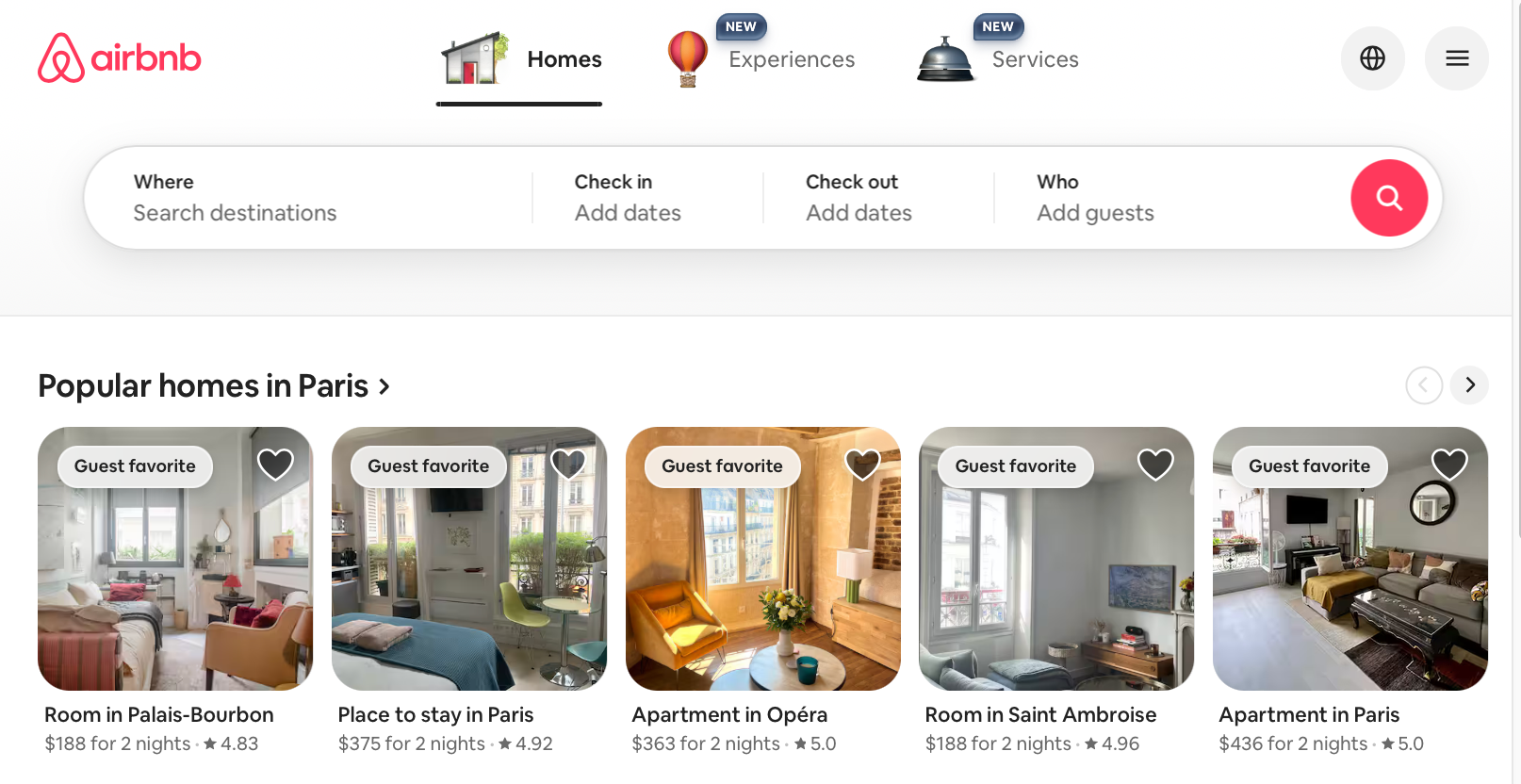
3. Brand strategist
Brand strategists focus on the “big picture” of communication design. Instead of designing visuals directly, they align every creative decision with a brand’s identity and long-term goals.
They analyze markets, define positioning, and maintain consistent campaigns across channels.
Starbucks is a strong example.
Whether it’s the cups, a seasonal ad, or the mobile app, everything feels unmistakably Starbucks—down to the typography and tone of voice.
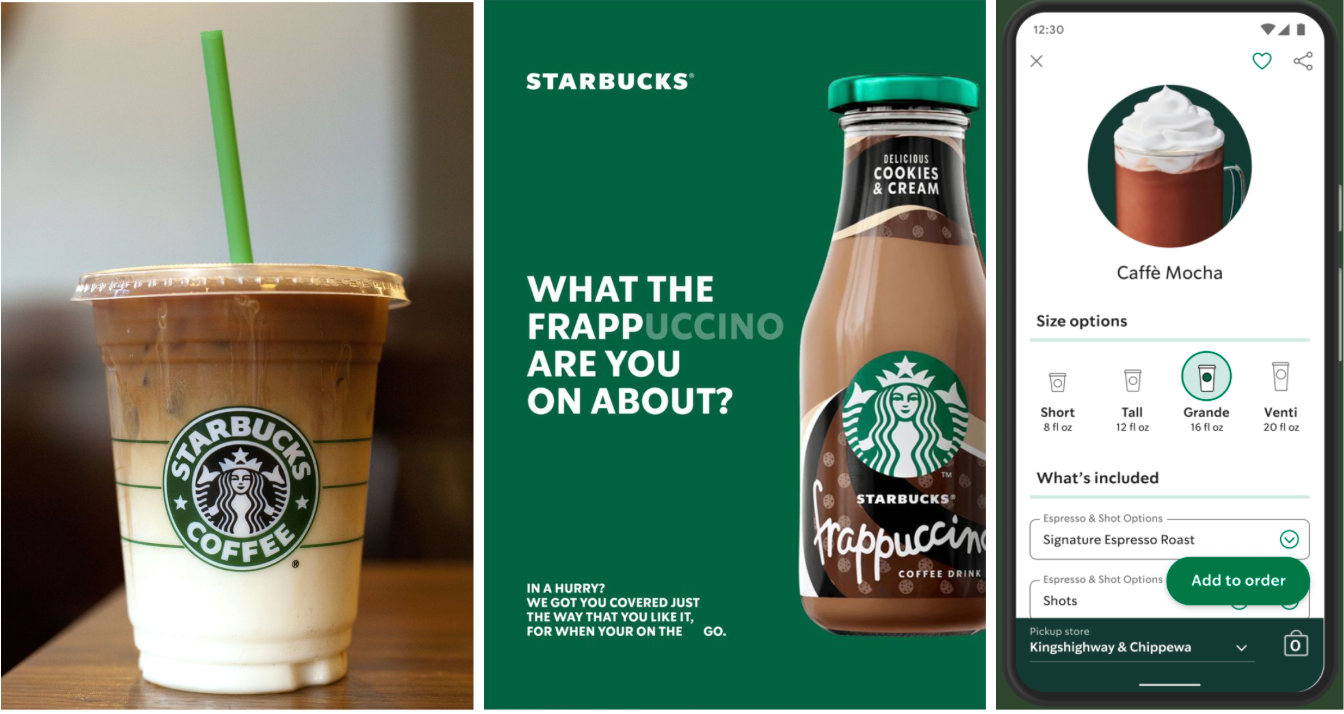
Brand strategists make sure that cohesion exists.
4. Marketing and advertising roles
Before entering the field of communication design, many professionals gain experience in adjacent roles within advertising agencies or in-house teams.
Positions such as art directors or creative directors involve guiding teams of designers, writers, and strategists to shape campaigns that align across all channels.
Sephora is a clear example, from its Rare Beauty window displays and high-impact billboards to in-store product storytelling and influencer-driven events, such as Sephora Squad.

Each element looks distinct on its own, but together they form one unified brand experience.
Working in these kinds of roles helps aspiring communication designers practice leadership while remaining hands-on with creative problem-solving.
5. Emerging careers
As technology reshapes the creative industries, new opportunities are opening up for communication designers. For design graduates, this means not only stepping into established roles but also helping invent the next wave of design practice that will shape the world.
AR/VR design, motion graphics, and AI-driven creative work are emerging fields that require technical expertise and storytelling ability.
LEGO’s AR experiences, which animate models once they’re built, show how communication design can turn physical products into immersive storytelling platforms.
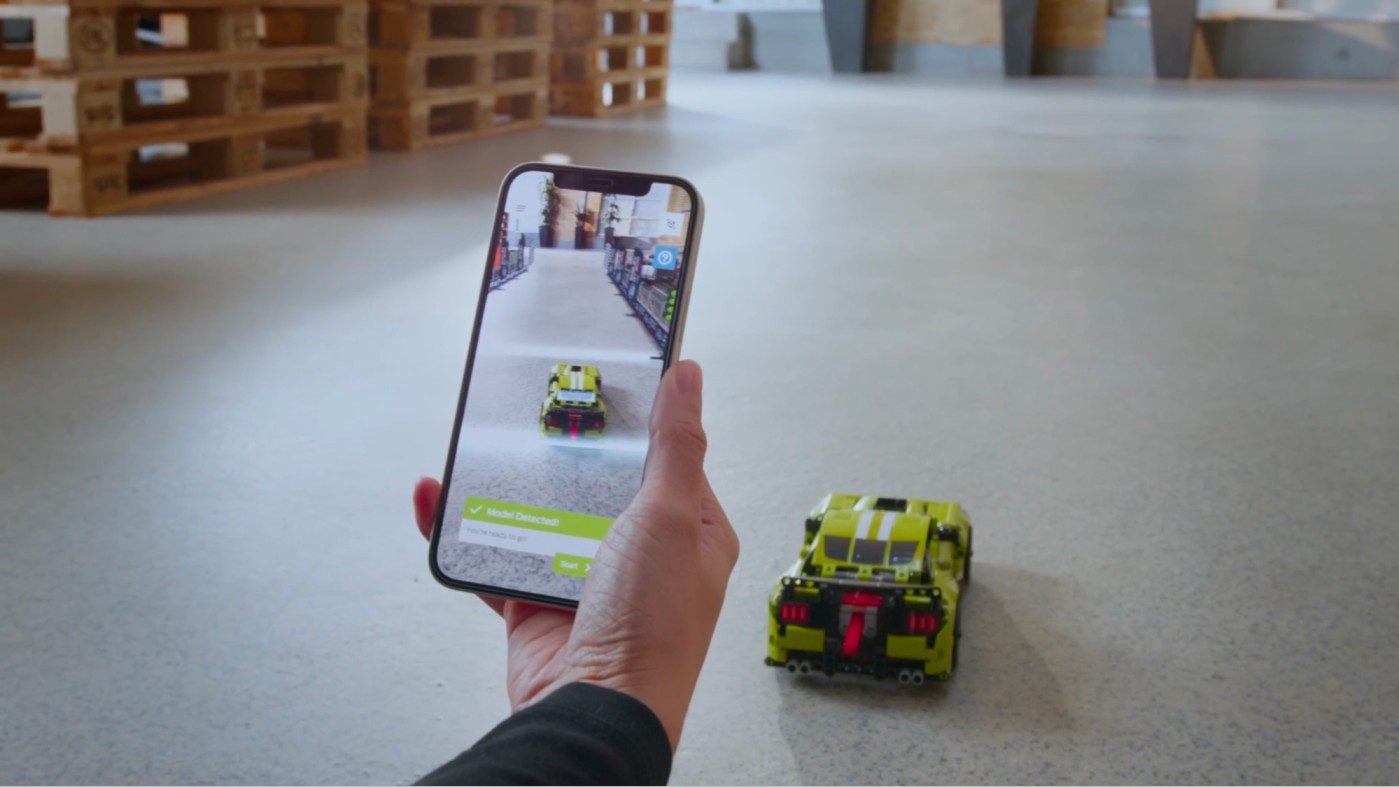
If motion interests you, consider scanning an animation career review to map out skills and roles before you specialize.
Key takeaways
-
Communication design combines creativity, strategy, and technology to convey ideas that audiences can understand and act upon.
-
It goes beyond graphic design or visual design by focusing on the what, who, and why behind every message.
-
Core principles, such as clarity, audience-centricity, and storytelling, help designers create purposeful and emotionally resonant work.
-
The design process, from research to iteration, ensures ideas are tested, refined, and aligned with measurable goals.
-
Strong communication designers combine visual literacy with strategic thinking, collaboration, adaptability, and expertise in digital tools.
-
Career paths range from graphic design to emerging fields such as AR/VR and motion graphics, offering opportunities across various creative industries.